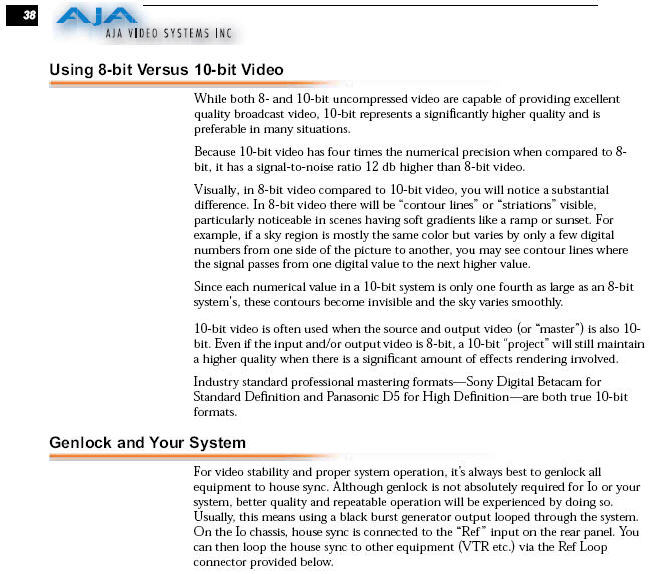Video Migration in the Preservation LaboratoryDigital Video Capture
8-bit, 10-bit and 14-bit Capture Options |
||
In the following image, is an image capture from the same AJA Io System PDF, p 38; it defines some of the major advantage to using 10-bit capture of the analog video signal. 8-bit RGB has 256 steps for each of the red, blue and green channels, while 10-bit scaling has 1024 steps. This allows significantly more RGB values (steps) for the incoming signal to be divided into by the ADC. The problem described on p 38-39 (below) is due to the natural compression of ITU-BT 601 (standard) video where the full 256 steps available in 8-bit digital scaling are reduced to 219 steps due to the definition of the ITU 601 standard. This is because of the blackest black is defined as RGB-step 235, rather than 255, and the whitest white is plateaued at RGB 16, rather than RGB 0; is is a range of (235-16) 219 RGB-steps, a significant compression. White the loss of RGB step in the whites is problematic, the loss of 19 steps in the dark is profound. |
||
 |
||
|
||
Video Preservation Web Site
mig_dig1 link | mig_dig2 link | mig_dig3 link | mig_dig4 link | mig_dig5 link | mig_dig6 link | mig_dig7 link
mig_trad1 link | mig_trad2 link | mig_trad3 link | mig_trad4 link | mig_trad5 link | mig_trad6 link | mig_trad7 link